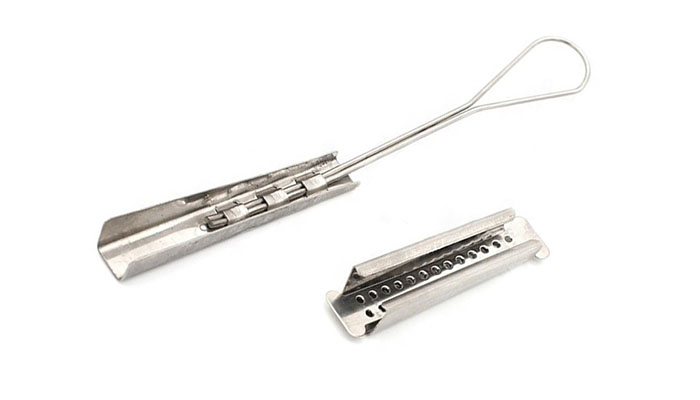
A drop wire clamp is a component used to support and secure individual wires or cables that drop or hang down from the main conductor. It is also known as a suspension clamp or wire suspension clamp. The clamp also manages the downward connections of service wires. These includes distribution lines that provide electricity to homes or businesses. They are from materials that are strong, durable and resistant to environmental factors. These include galvanized steel, aluminum or stainless steel. Common types of drop wire clamps include parallel groove clamp, bolt-type drop wire clamp, suspension drop wire clamp and messenger wire clamp. Drop wire clamps help to provide reliable support and seamless connectivity for secondary wires. They find use in various applications in the industry such as distribution lines, service connections, telecommunication lines, renewable energy and transmission lines.
Key features of drop wire clamp
Drop wire clamps have specific features that enable them to securely hold, support and manage secondary wires or cables. The specific components vary depending on wire size, mechanical stress and electrical insulation needs. The following are the key features of the drop wire clamps.
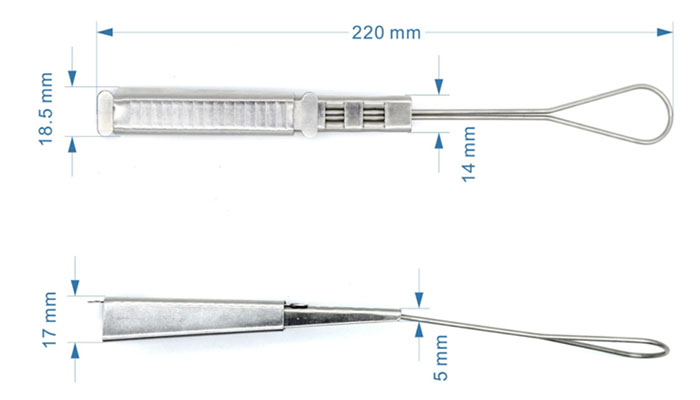
- Gripping mechanisms – drop wire clamps have a mechanism for securely gripping the secondary wire or cable. These mechanisms include jaws, grooves or other structures that prevent the wire from slipping or detaching.
- Adjustability – their adjustability allows them to accommodate various wire sizes and tensions. This helps ensure a proper fit for different applications.
- Insulation – insulating components prevent electrical contact between the secondary wire and the main conductor or other components.
- Material – they are from materials resistant to environmental factors. These include galvanized steel, aluminum, stainless steel or corrosion-resistant alloys.
- Parallel grooves – parallel groove clamps have grooves that hold the wires in place. This also helps maintain proper spacing on the transmission lines.
- Easy installation – they also have a straightforward installation that requires basic tools and equipment for attachment.
- Mechanical strength – they are also able to withstand mechanical stresses. These are from wind, tension and other external factors.
Selection and installation of drop wire clamp
The selection process of the drop wire clamp should ensure the effectiveness, reliability and safety of your electrical or communication system. This involves considering several factors that help to assess the right type of drop wire clamp to use for your application. Some of these factors include wire size and type, mechanical stress, environmental factors, electrical insulation, adjustability, type of installation and compatibility. The installation process should ensure the secure support and reliable connectivity for secondary wires. The following is a basic installation process of the drop wire clamp.
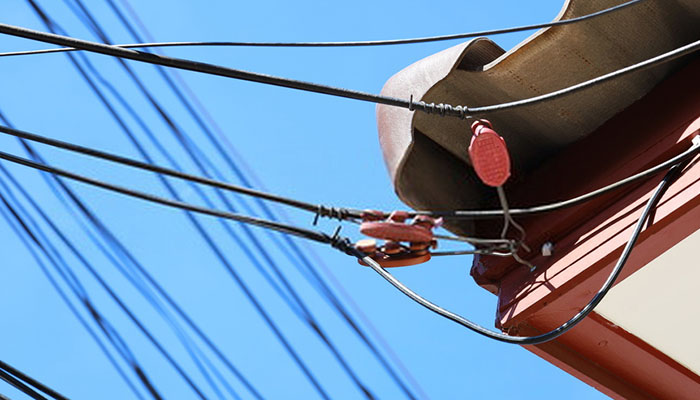
- Gather all the tools and equipment needed for the installation. These includes the drop wire clamps, secondary wires, suitable connectors and fasteners.
- Inspect the drop wire clamps, wires, connectors and hardware for any defects or damage.
- Identify the locations where the drop wire clamps will install. Consider the design of the electrical system, the route of the secondary wire and any mechanical and environmental factors.
- Ensure the installation area is clear of obstacles and hazards by using appropriate equipment to access elevated positions safely.
- Position the clamp in the desired location ensuring proper alignment and clearance. Also use the provided fasteners to secure the clamp to the structure.
- Place the secondary wire within the gripping mechanism of the drop wire clamp. Ensure that the wire is properly aligned and centered within the clamp.
- Use the adjusting mechanisms to ensure proper fit around the secondary wire.
- Ensure the insulating components provided with the drop wire clamp position between the secondary wire and the main conductor.
- Visually inspect all drop wire clamp connections to ensure they are properly secured and aligned.
- Keep detailed records of the installation including photographs, diagrams and notes on the location of each drop wire clamp.
Maintenance and inspection of drop wire clamps
Drop wire clamps require regular maintenance and inspection. This is to ensure their continued performance, reliability and safety. This helps to extend the lifespan of the drop wire clamps and prevent potential failures. The following is a basic guidance on how to maintain and inspect the drop wire clamps.
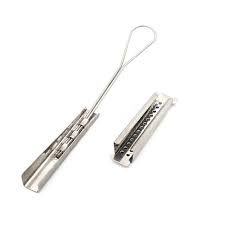
- Establish a regular inspection schedule based on the specific requirements of your system.
- Regularly visually inspect each drop wire clamp for signs of wear, damage or deterioration. Check for rust, corrosion, loose fasteners or any visible defects.
- Consider the environmental conditions the drop wire clamps will handle. Polluted, humid and corrosive environments can speed up wear.
- Check for proper tension and sag for secondary wires supported by the clamps.
- Ensure the gripping mechanism of each drop wire clamp to ensure it securely holds the secondary wire.
- Inspect the fasteners, bolts, and other hardware for signs of wear or loosening.
- Apply suitable lubricants to moving parts of the drop wire clamps to help prevent corrosion and ensure smooth operation.
- Keep a record of inspection dates, findings and any maintenance actions taken for each drop wire clamp.
Comparative analysis of drop wire clamps in the Southeast Asian market
Comparative analysis of the drop wire clamp involves considering several types and designs. This helps to determine which options best meet the specific requirements of the regions diverse electrical and communication systems. The choice of the drop wire clamp will depend on the unique characteristics of your project, specific requirements of application and budget considerations. The following is a comparative analysis for the drop wire clamp based on various factors.
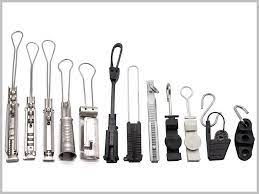
- Consider the materials used in the construction of the clamps. Opt for materials such as galvanized steel, aluminum or stainless steel.
- Select adjustable and versatile to accommodate a range of secondary wire sizes and tension levels.
- Assess the mechanical strength of the clamps especially their ability to withstand wind, tension and mechanical stress.
- Ensure the drop wire clamps meet relevant international and regional standards. This ensures they offer safety, performance and quality to the overhead transmission lines.
- Compare the costs of different drop wire clamps. Consider their features, durability and expected lifespan.
- Select from reputable manufacturers known for producing high-quality products. This is to help reduce maintenance and enhance the overall system performance.
Certifications and standards
Drop wire clamps in Southeast Asia should adhere to various international and regional certifications and standards. This is to ensure their quality, safety and compliance with industry regulations. Manufacturers and suppliers should be able to provide documentation demonstrating their compliance with these standards. These standards are as detailed below.
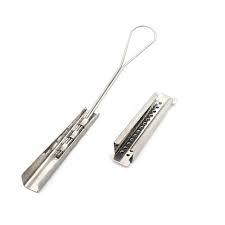
- IEC standards – these are international standards for electrical and electronic technologies.
- ISO standards – they establish standards for various industries including those rated to mechanical and electrical components.
- ASTM International – they develop and publish technical standards for a wide range of materials, products, systems and services.
- Local and national standards – the countries have their own national or regional standards. They mostly develop standards for the various industries. Some of these are from Singapore, Malaysia and Thailand.
- Electrical safety standards – clamps used in electrical applications should adhere to safety standards. These standards should address insulation, electrical performance and prevention of electrical hazards.
- Product-specific standards – product specific standards apply depending on the industry-specific standards
Regional market for drop wire clamps in Southeast Asia
The drop wire clamp market in Southeast Asia is dependent on a range of factors. These include the region’s economic growth, infrastructure development, energy demand and technological advancements. The need for durable, corrosion-resistant and reliable solutions for the challenging environmental conditions shapes the market. The following are the common factors shaping the drop wire clamp market in Southeast Asia.

- Infrastructure development – many of these countries are rapidly developing their infrastructure. These includes electrical and communication networks. This leads to increased demand for reliable and efficient wire support solutions like drop wire clamps.
- Electrification projects – the drop wire clamps are essential for extending electricity distribution networks. They also connect homes, businesses and industries to the main grid.
- Telecommunication expansion – expansion requires the use of drop wire for securing communication cables and fiber optics.
- Renewable energy initiatives – the increasing adoption of renewable energy sources like solar and wind power leads to increased demand for the clamps. They help to connect solar panels, wind turbines and other renewable energy infrastructure to the grid.
- Technological advancements – advances in material science and manufacturing processes lead to the development of more durable and efficient drop wire clamps.
Frequently asked questions
They help to secure and support secondary wires or cables that drop from the main conductor or distribution line. They also help maintain proper wire alignment, tension and insulation.
Regular visual inspections are important to check for wear, corrosion and proper gripping.
Drop wire clamps are from durable materials such as galvanized steel, aluminum, stainless steel or corrosion-resistant alloys.